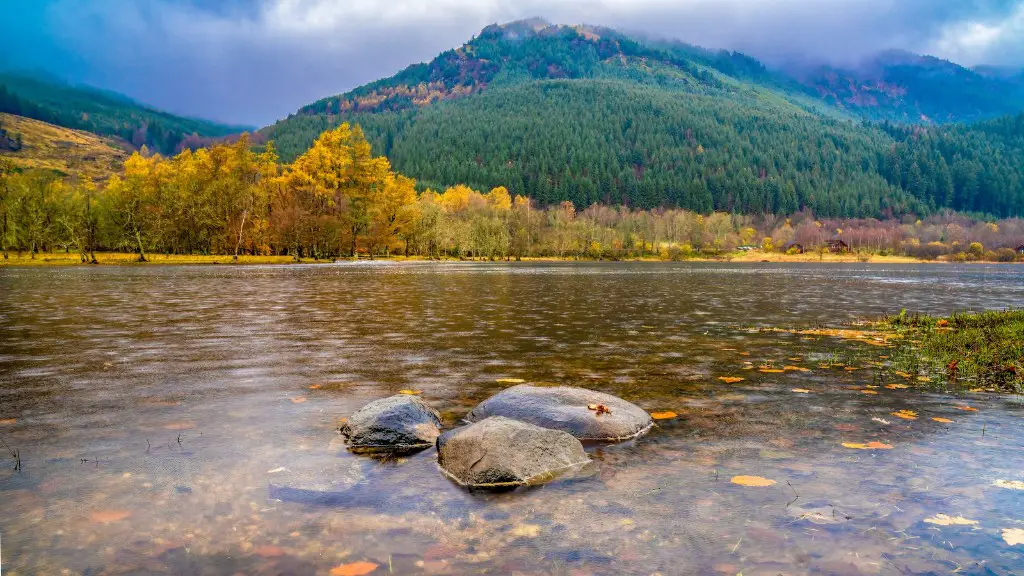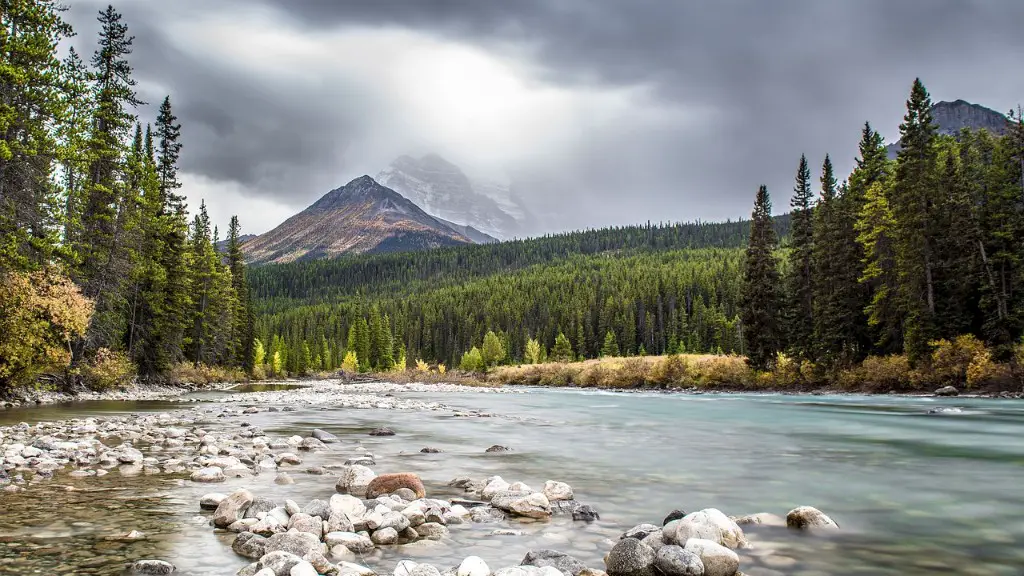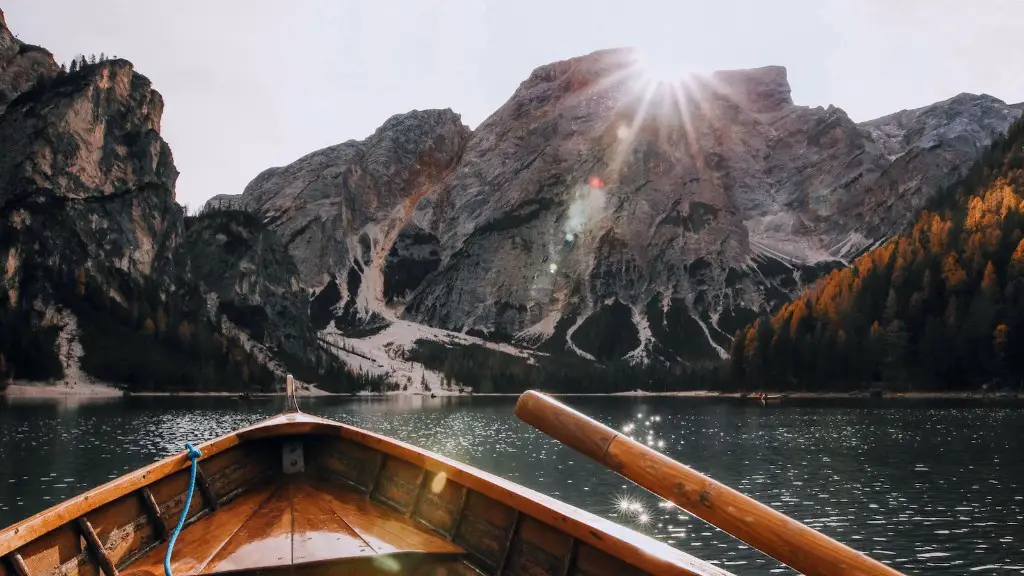Mississippi River Headwaters
The Mississippi River is an integral part of the United States landscape and geography. From its source in Minnesota, the river flows south to its Delta near New Orleans, Louisiana. The Mississippi is the fourth longest river in the world, and it drains all or part of 31 states and two Canadian provinces as it winds its way towards the Gulf of Mexico. But where does the Mississippi River begin? The answer lies in the northernmost parts of the river’s watershed.
The Mississippi River has two primary headwaters: the Mississippi River itself, and the Missouri River. The Mississippi’s main headwaters is the Itasca Lake in northern Minnesota. The lake, which is located within Itasca State Park, is the source of the main-stem of the Mississippi River. The water from the lake flows south and southwest, gaining speed as tributaries join it along the way. The Mississippi then flows south to its junction with the Missouri River, where it is wide enough and strong enough to be considered a navigable waterway.
The second headwaters of the Mississippi River is the Missouri River. Its source is the confluence of the Jefferson, Madison, and Gallatin Rivers in Montana. The river then winds its way through several states before joining with the Mississippi along the Iowa-Illinois border. The Mississippi-Missouri Rivers together form the Mississippi. The Missouri River is the longest tributary of the Mississippi, adding a total of 2,341 miles to the Mississippi’s length.
The two headwaters of the Mississippi River are part of a vast watershed that encompasses all or part of 31 states and two Canadian provinces. The watershed is one of the largest in the world, draining an area of 1,245,000 square miles. The channels, rivers and lakes that make up the Mississippi River drainage system provide habitat and sustenance to a wide variety of plant and animal species. The watershed is also important to humans, who rely on the waters for recreation, irrigation, and transportation of goods and services.
The Mississippi River is an important part of the North American landscape. Its headwaters in Minnesota and Montana, along with its numerous tributaries, all carry a share of the river’s water to the Gulf of Mexico. The river and its tributaries provide crucial habitat for numerous species of birds, fish, and other animals, and are important ecosystems for human users.
Mississippi River as a Trade Route
The Mississippi River has been an important trade route since ancient times. Many Native American groups used the river as a major transport route, while European settlers did the same. The river played an integral role in connecting various parts of the country, allowing farmers and businessmen to send their goods to cities and ports located on its banks. It was also a major avenue of travel for Native Americans and settlers, who frequently used the river as a means to get to other places.
The river also played an important part in the economic development of the United States. During the 1800s, the Mississippi was an integral part of the country’s transportation system, with steamboats transporting goods and people up and down its length. As the steamboat era faded away, the river continued to be an important avenue of transportation, with towboats, barges, and other vessels taking their place.
Today, the river still plays an integral role in many aspects of the US economy. It serves as a major transportation route for grain, oil, and other goods, and is used by commercial fishermen, recreational boaters, and cruise ships. The river also provides habitat for over 300 species of fish, making it an important part of the global fisheries industry. The Mississippi is currently being considered as a potential trade route for goods coming from the Midwest to the East Coast and overseas.
The Mississippi River continues to be a vital part of the United States’ economy and culture. Its importance as a trade route has played an integral role in the development of the American economy, and it remains as one of the country’s most important transportation routes today.
Restoration Projects for the Mississippi River
In recent years, there has been an increased emphasis on restoring the ecological health of the Mississippi River. A number of governmental agencies, conservation groups, and private individuals have been involved in efforts to improve water quality, reduce pollution, and restore natural habitats. These efforts have included introducing non-native species, enhancing recreation opportunities, and improving water quality.
One of the primary aims of these restoration projects has been to improve water quality. A range of methods have been successfully used to reduce sediment and nutrient concentrations, as well as eliminate toxic pollutants. These include establishing buffer strips, restoring wetlands, and improving agricultural runoff management practices. These projects have been beneficial not only for improving water quality, but also for providing important wildlife habitats, increasing recreational access, and providing educational experiences.
In addition, conservation and restoration efforts have sought to protect and restore key species in the Mississippi River’s ecosystem, such as the pallid sturgeon. This species, which is an important keystone species in the river’s ecosystem, has had its population drastically reduced due to poor water quality and habitat destruction. To protect the species, agencies and conservation groups have worked to create a network of protected areas and restore degraded habitats.
Overall, the restoration efforts have made a positive impact on the Mississippi River’s ecosystem. They have reduced pollutants, enhanced water quality, and improved the quality of life for plant and animal species. These projects have also enabled people to access and enjoy the river in new ways, whether through recreational activities such as fishing, hunting, and boating or through educational experiences.
Mississippi River Pollution
The Mississippi River, while serving as an important source of freshwater and commerce in the United States, continues to face a number of environmental challenges. The most significant of these is pollution. Pollution in the Mississippi River is a complex and varied problem, with a number of contributing sources.
One of the most significant sources of pollution is agricultural runoff. Fertilizers, pesticides, and other chemicals used in agricultural production can enter the river through runoff, creating problems such as algal blooms and increased nutrient levels. Sewage discharge from municipal sources is another major source of water pollution, as are industrial runoff from factories, paper mills, and other commercial and industrial facilities.
The pollutants from these sources can significantly degrade water quality in the river, leading to problems such as decreased oxygen levels and toxic algal blooms. These pollutants can also increase bacteria levels, making it unsafe for humans and animals to enter the water. This in turn can lead to a degradation of the Mississippi’s ecosystems, as well as economic losses due to recreational and commercial uses being affected.
The effects of pollution in the Mississippi River are far reaching and can have serious impacts on the health and well-being of humans and animals. In response, public and private organizations have put in place plans and regulations to reduce pollution and improve the river’s water quality. These efforts have had some success, but the work is far from finished. Continued vigilance and environmental stewardship are needed if we are to continue to enjoy the wonders of the Mississippi River.
Conservation of the Missisippi River
The Mississippi River is an extremely important aquatic resource for North America. Its watershed comprises 31 states and two Canadian provinces, making it the fourth largest watershed in the world. For this reason, it is important to ensure the ongoing sustainability of the river’s ecosystems. To do this, conservation and management efforts have been put in place at the local, state, and federal levels.
At the local level, conservation efforts often focus on the protection of important habitats and species, as well as reducing pollution and improving water quality. Local agencies and organizations can also work with private landowners to protect sensitive areas and reduce runoff from agricultural land. At the state level, initiatives can include efforts to improve public access and recreational use of the river, as well as implementation of water quality standards.
At the federal level, the United States government has created a number of programs and regulations to improve water quality and help protect the Mississippi River’s ecosystems. These include the Clean Water Act, which sets standards for water quality and protects wetlands, as well as the Endangered Species Act, which protects endangered species in the river’s watershed. The Mississippi River has also been named an American Heritage River, and the US Army Corps of Engineers works to ensure the safety and efficient operation of the waterway.
Overall, the goal of conservation and management of the Mississippi River is to ensure its ongoing sustainability and protect the health of its ecosystems. Through a variety of initiatives at the local, state, and federal levels, conservation efforts are helping to safeguard this important resource.
Mississippi River in Popular Culture
The Mississippi River has been a source of both inspiration and mystery throughout history. Its turbulent waters have captivated the imagination of countless explorers, writers, musicians, and filmmakers. Its banks have served as the backdrop to countless stories of adventure, tragedy, love, and redemption.
The Mississippi River has been immortalized in popular culture in countless ways. Mark Twain’s Adventures of Huckleberry Finn explored the river’s folklore and culture, while Faulkner’s conversations with the river inspired his literary works. Movies such as The Adventures of Huckleberry Finn, The African Queen, and Better Off Dead have fictionalized the river’s stories for generations of moviegoers.
The Mississippi River has also inspired countless musicians over the years. Hank Williams, Johnny Cash, and Bob Dylan have all waxed poetic about the river. Jazz musicians, too, have drawn inspiration from its waters, with Louis Armstrong, Duke Ellington, and many others composing music devoted to the legendary waterway.
The Mississippi River has a unique and powerful presence in the culture of the United States. Its turbulent history and power have inspired countless works of music, literature, and film, and it continues to captivate imaginations to this day.
Mississippi River Tourism
The Mississippi River has a long history of being a powerful and influential part of the American landscape. Today, the river is an increasingly popular destination for tourists from all over the world. There are a variety of ways to explore the river, from traditional river cruises to more adventurous activities such as kayaking, fishing, and camping.
For many, the Mississippi River is best explored from its banks. Many states along the river’s banks have developed scenic routes that hugs the river’s edge, allowing visitors to take in its striking sights. Along the way, visitors can explore the many towns and cities along its path, as well as experience unique regional cuisine and culture.
For those looking for a more active experience, there are plenty of activities to enjoy on the Mississippi River. Fishing and kayaking tours, both motorized and non-motorized, are becoming increasingly popular, as are river cruises. From the comfort of your boat, you can take in the stunning landscapes and wildlife of the Mississippi River.
Overall, the Mississippi River is an increasingly popular travel destination. Its unique blend of history, culture, and nature make it a perfect spot for a vacation. Whether you’re looking for an adventurous experience or something more relaxed, there is something for everyone along the Mississippi River.





